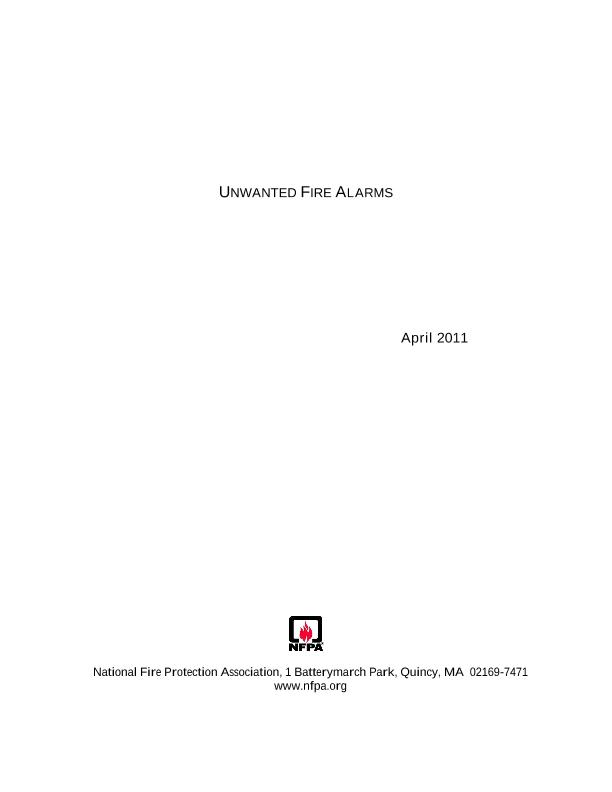Unwanted fire alarms

Contenido multimedia no disponible por derechos de autor o por acceso restringido. Contacte con la institución para más información.
| Tag | 1 | 2 | Value |
|---|---|---|---|
| LDR | 00000cam a22000004b 4500 | ||
| 001 | MAP20110045111 | ||
| 003 | MAP | ||
| 005 | 20110706122658.0 | ||
| 008 | 110706s2011 usa|||| ||| ||eng d | ||
| 040 | $aMAP$bspa$dMAP | ||
| 084 | $a813.3 | ||
| 245 | 0 | 0 | $aUnwanted fire alarms |
| 260 | $aQuincy$bNational Fire Protection Association, Fire Analysis and Research Division$c2011 | ||
| 520 | $aUnwanted fire alarms are a problem for the fire service, businesses, and the public. In 2009, fire departments went to 16 false alarms for every 10 fires, and 45 false alarms for every 10 structure fires. In 2009, almost half (45%) of false alarm responses were to unintentional activations, one-third (32%) were due to system malfunctions, 8% resulted from malicious or mischievous false alarms, and 15% were due to other false alarms. The ratio of smoke alarm activations to actual fires is even higher in surveys of the public than it is in fire department responses | ||
| 650 | 1 | $0MAPA20080620424$aSeguridad contra incendios | |
| 650 | 1 | $0MAPA20080568948$aFalsas alarmas | |
| 650 | 1 | $0MAPA20080562342$aEstadísticas | |
| 651 | 1 | $0MAPA20080638337$aEstados Unidos | |
| 710 | 0 | $0MAPA20080432614$aNFPA |

